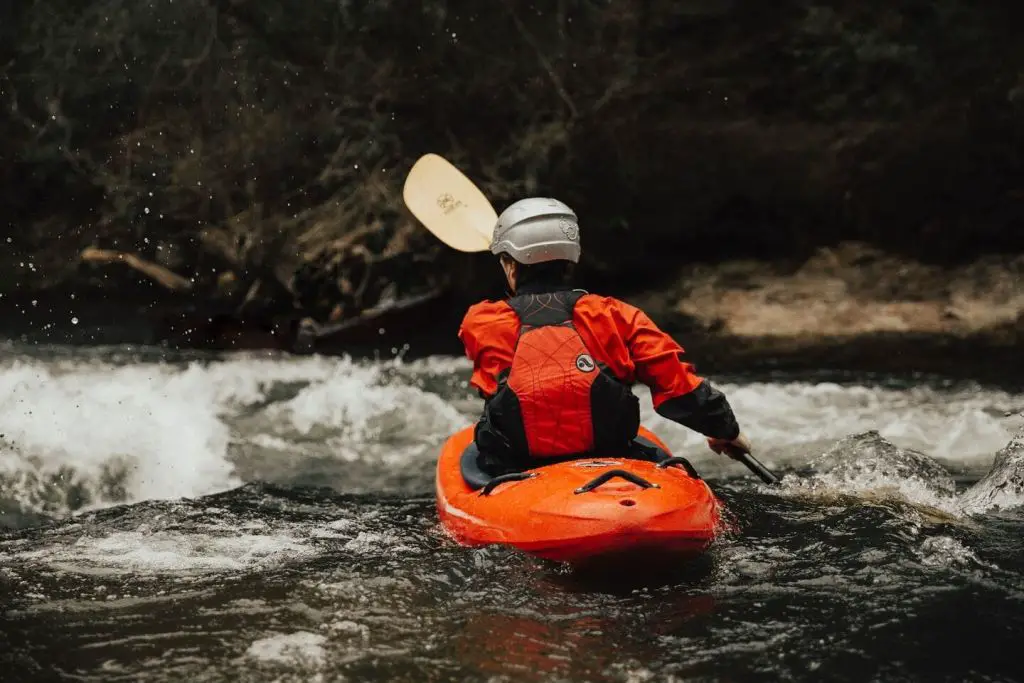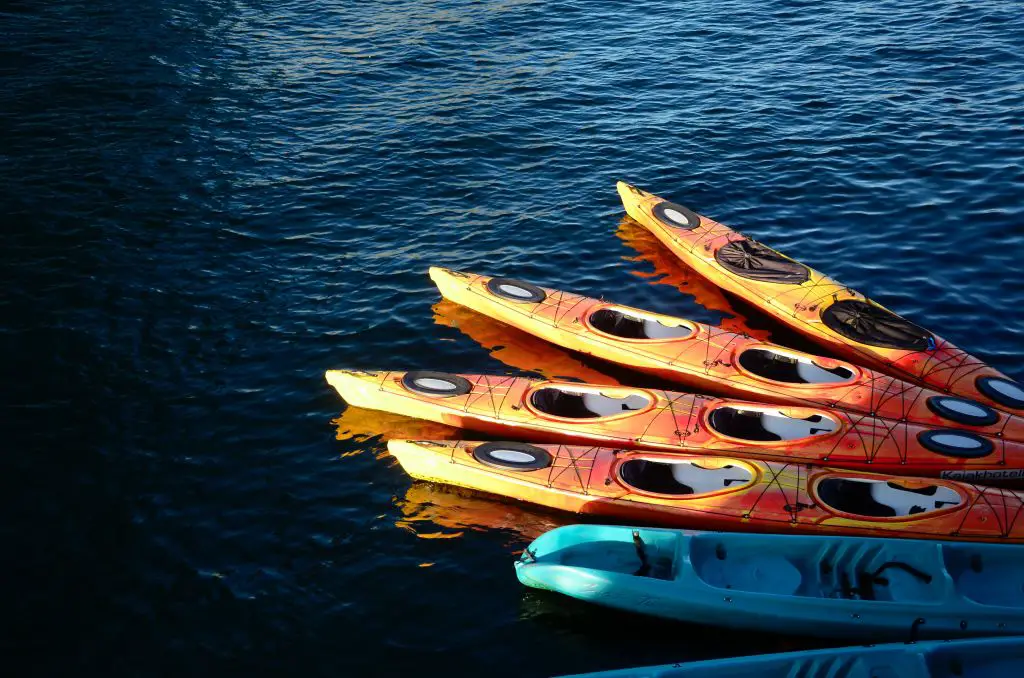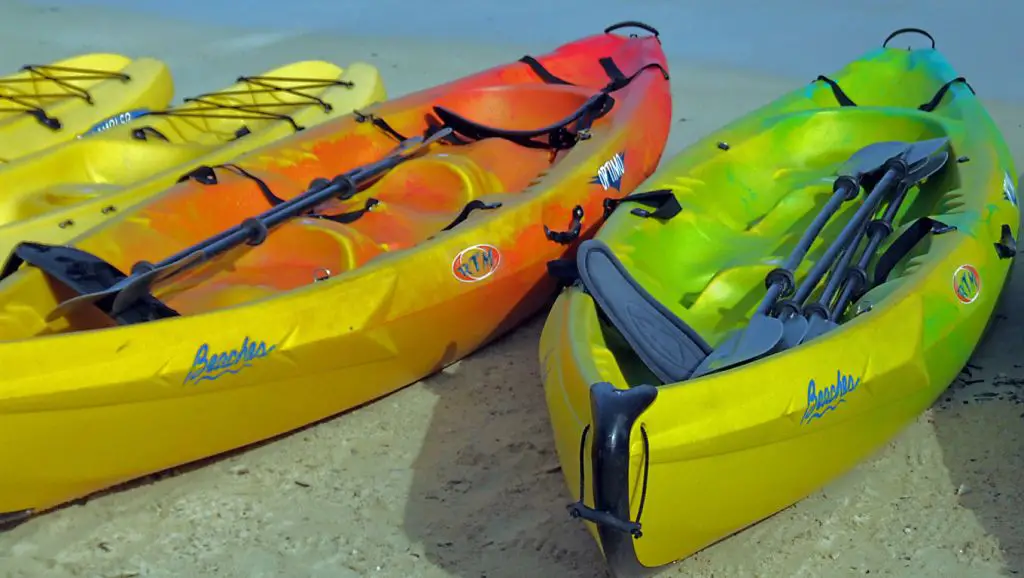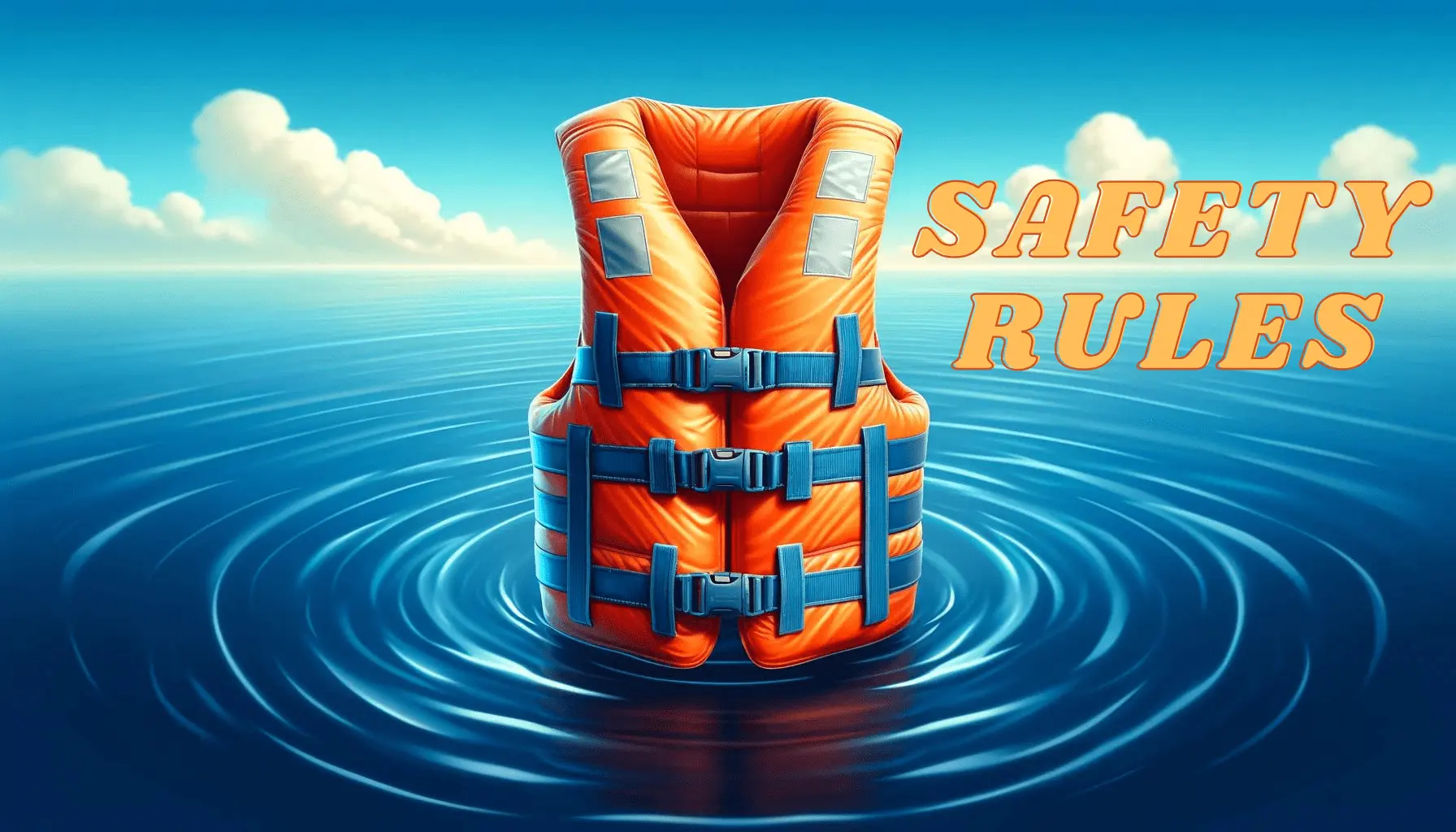The subject of safety is a very important one, probably the most important aspect of fun activities like kayaking.
When paddling, you are immersed in nature and open to the elements, the biggest of which is water. And I have to say this: water is the most powerful of the elements.
Therefore, safety has to be the number one thing that you plan and prepare for when you go paddling. With that said, where do kayak float bags come in?
They are valuable options if and when you go rough-water paddling. So, to open the debate around the question, do I need float bags for my kayak?
The short answer is yes, if you are in rough water like whitewater, oceans, or coastal waters. We’ll get into the what and why below.
What Are Kayak Float Bags?

In the world of paddlesports, kayak float bags serve as an essential component for safety and stability. These ingeniously engineered contrivances are essentially air-filled bladders, purposefully designed to fit into the fore and aft sections of a kayak.
Their primary role is to limit the volume of water that a kayak can take on in case of a capsize, significantly improving the buoyancy and maneuverability of the watercraft during a recovery.
Additionally, kayak float bags provide an added level of safety in conditions of turbulent water or fast currents. Their utility extends beyond safety, enhancing the kayak’s balance, making it more agile, and facilitating more efficient paddling.
Whether you’re a beginner or a seasoned kayaker, investing in kayak float bags is a judicious decision. They augment not only your safety but also contribute towards a more rewarding kayaking experience.
Different Types Of Float Bags And Their Features
Kayak float bags are inflatable bags designed to hold water in the event of a capsize, keep water out, and keep a kayak afloat. They also provide buoyancy and stability.
Typically, there are two main types of flotation bags: standard and split bags.
Standard float bags fit most kayaks, except for touring and whitewater kayaks without a central support pillar.
The second main type of float bag is the split float bag, which is designed for kayaks with central support pillars.
Split float bags are thin, long, and designed for slim or small kayaks with central support pillars.
Next, you need to get the right size bag that is best for your kayak. Almost all brands have many sizes that would fit your kayak size and type.
Just measure the bow and stern of your kayak to estimate what you need.
Do I Need Float Bags for My Kayak? Reasons Why You Might Need Float Bags
You need to choose the right kayak float bag by considering kayak size, weight capacity, and paddling location, as well as materials like durability, corrosion resistance, and strength.
Enhancing Buoyancy And Stability

Kayak float bags are vital for preserving buoyancy in the event of an accident or on open water. They provide extra buoyancy to keep the kayak afloat in rough water.
They also keep the kayak from sinking, which is especially important if your kayak takes in water.
Stability is not an issue on most lakes, but when in whitewater or on a tour along a coastline, it can be a priceless commodity.
Therefore, kayak float bags can and will give you extra stability and prevent your kayak from being overrun by waves. Depending on your needs, you might only need a bow or stern float bag.
However, in many cases, you may need both. Again, your kayak’s weight, size, and purpose will determine what exact configuration you may need.
Decreasing Water Volume In A Capsize
In the unfortunate case of capsizing, flotation bags can be used to keep water from flooding hatches. This will allow for quick rescues.
Also, if the hull gets breached through a crack from hitting rocks, a float bag can greatly reduce the water from filling in by 80–90%.
Additionally, kayak float bags will lower the weight of the kayak because air is lighter than water. In sea kayaking, advanced stroke techniques like the “roll” can be easier since the vessel will be lighter.
Float bags don’t solve all your problems, but they can make it easier to paddle. Then, to make bad situations like a hull leak not as bad, and also to help rebalance if you do capsize.
And finally, if you can’t recover from a leak or a capsize and need to be rescued, rescuers can easily help recover you from the water because you are floating.
Paddling In Different Water Conditions

If you are a touring or whitewater paddling novice, you, as a paddler in even the best and lightest of boats, are still prone to sinking.
Therefore, it is wise—even mandatory—to use kayak float bags as a key safety device.
In whitewater paddling, the river can come at you quickly. You can continuously get sucked underwater by the current along the trail.
Not only do you need a spray skirt and dry or wet suit, but float bags can make it possible to always surface even after plunging underwater temporarily.
Of course, to go whitewater kayaking, you will need to take accredited courses. Go to your local paddling club to ask for all the details.
The same thing can happen in coastal waters, but it can even be more severe depending on the location. Waves are known to get high at Pacific Ocean beaches.
In the case of seas and oceans, you will need to choose your kayak carefully. Composite or carbon fiber materials are the lightest you can get.
Also, boats with plenty of storage options will be necessary, as will the mastering of advanced strokes and techniques like rolls and paddling with advanced skills.
Assessing Your Kayak: Which Types Need Float Bags
The first thing is to make sure your kayak matches the category of paddling you wish to do. In this case, whitewater and sea kayaks.
The next thing is to measure your bow and stern. After that, check if you have a center pillar. This determines if you should go for standard or split bags.
The size of the kayak float bags depends on the size and weight of your kayak.
Check the size and weight capacity of your float bag to guarantee it will fit and offer adequate buoyancy.
Additionally, the size of the bags you need is also determined by how much space you have on the kayak.
Float Bags In Sit-In Kayaks

For sit-in kayaks, you will have to ask yourself some questions that I will address here.
Do you have enough storage space? If not, you might need to use smaller bags.
Do you have enough space in the foot well? If not, you might need to use split bags or none at all and use just a stern bag and compensate when you paddle.
If you have any questions, be sure to ask a local kayaking store or an experienced paddler.
Float Bags In Sit-On-Top Kayaks

For sit-on-top kayaks, the hatches are the places to put kayak float bags, but you might have a separate need for the hatches.
This leaves the open deck as the next place to put float bags, but how do you peg them on the deck?
Do you have a lot of gear? If so, you can use a dry bag that doubles as a float bag to save space and still have floatation.
Later, I’ll show you the particular dry bags that are also float bags.
Special Cases: Sea Kayaks And Whitewater Kayaks
Kayak float bags have evolved over time, offering additional capabilities for various situations.
Remember, they can be dry bags for additional storage, suitable for sit-in and sit-on-top kayaks, and have multiple connection points for various whitewater and tour kayaking configurations.
These versatile tools provide safety and versatility in various situations.
Choosing The Right Float Bags For Your Kayak
Kayak floats are available in a variety of sizes to fit a variety of watercraft, including playboats and sea kayaks.
Most boats over 8 feet in length can accommodate these bags in the bow. To fill bigger compartments, measure the boat compartment and purchase kayak floats.
Factors To Consider: Size, Material, And Shape
Float bags are built to last, as they must tolerate long periods of inflation in a variety of water situations.
Consider urethane, vinyl, and coated ripstop nylon for long-lasting performance. Inspect the seams on kayak float bags as well, as they are the weakest part due to stress during inflating.
Size is a key factor, but it is in relation to the amount of space that your kayak offers. So, measuring is a good idea before buying.
Still, if you are unsure, get a step bigger than you may need because you can inflate it to the required size even if it is bigger.
You will have to make a choice between two types of float bags: inflatable and foam. Inflatables main feature is that they can be deflated while you are not using them.
Foam float bags are more durable and can be more expensive than inflatables, but they are an excellent option all the same.
These days, shopping by brand might make sense, and because of the durability, choose a manufacturer that offers a lifetime warranty.
Top Brands And Models To Consider
The most common brands that you can find are Harmony and NRS. They offer quality float bags with plenty of options in size, material, and types.
Oru is a brand that makes foldable kayaks and accessories for them.
Other brands that also make kayak accessories are Dagger, CKS, Seattle Sports, and more.
It’s a good idea to test a few brands before you stick to one because choosing a brand might be a lifelong preference.
And of course, follow the recommendation of an experienced paddler.
Summary
I can’t tell you not to paddle in rough waters because you may be inexperienced, but if you are to do so, follow all safety procedures.
First, write a highly detailed float plan, paddle with many experienced paddlers, and use all safety gear properly.
In this article, we covered float bags, when you need them, their benefits, and how to use them properly.
Generally, float bags can be buoyancy devices as well as stability devices, but most significantly, they are safety devices.
Some of their benefits are that they can fit a wide variety of kayaks. They can act like a “spare tire” and keep you floating until you can fix a crack or leak in the kayak’s hull.
They can also help you increase your weight limit (slightly), and floats can help store your gear as well when every kilo counts.



